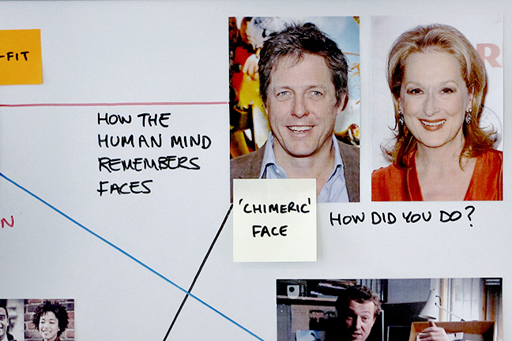2.1 The face, the whole face and nothing but the face

Forming an image from the halves of two others is known as a ‘chimeric’ face.
How many of the celebrities did you manage to recognise? Did you find it easier to recognise the halves when they were not aligned?
Obviously you would have found it difficult to recognise any of the halves if they were of people you do not know, but other than that you probably found it much easier to recognise the halves when they were not aligned. This is because when they were aligned, your mind saw the halves as forming a single, whole face and it tried to recognise who that face was. Remember, psychological research has found that the brain recognises faces ‘holistically’, which means we find it difficult to see a face as being composed of two different halves, and instead see it as a single, whole face – even if the two halves are of very different looking people! When the halves are not aligned, the brain does not see the image as a single whole face, allowing you to concentrate on the two halves separately.
If the facial composite systems used by the police are to create a good likeness of the suspect, then it is vital that they are designed to take account of how the human mind remembers faces.
